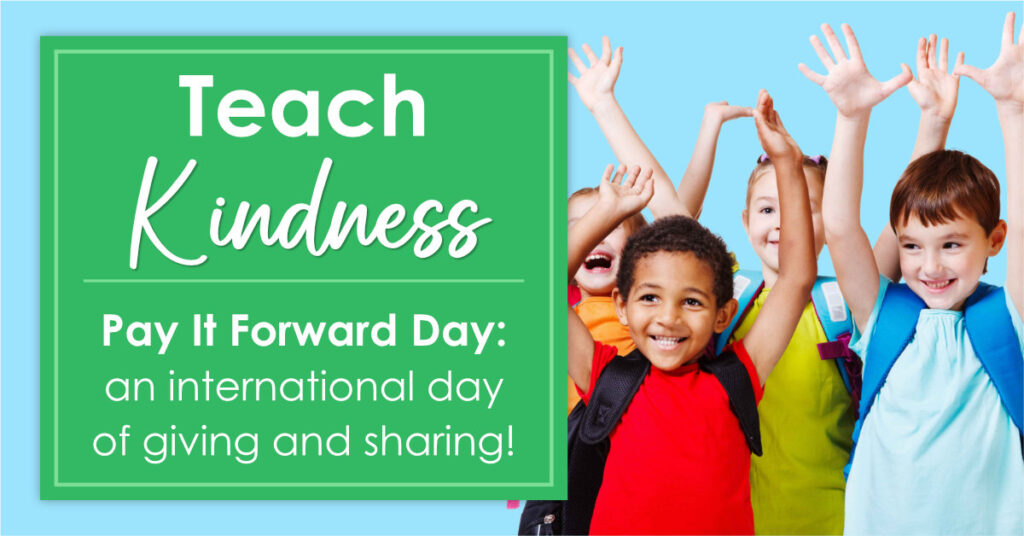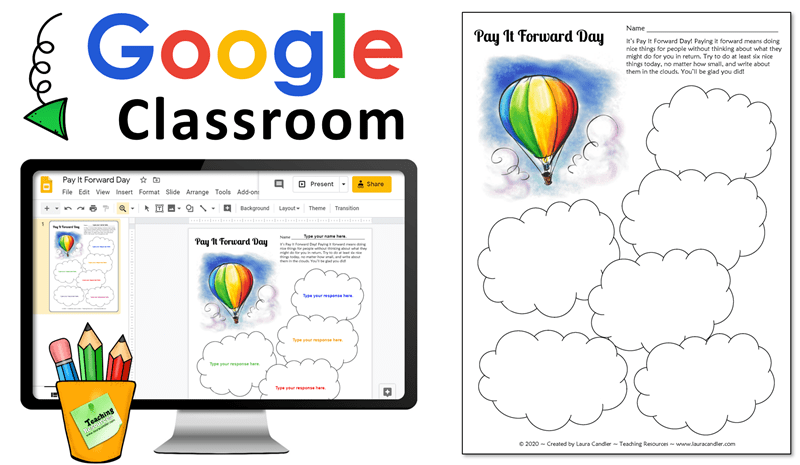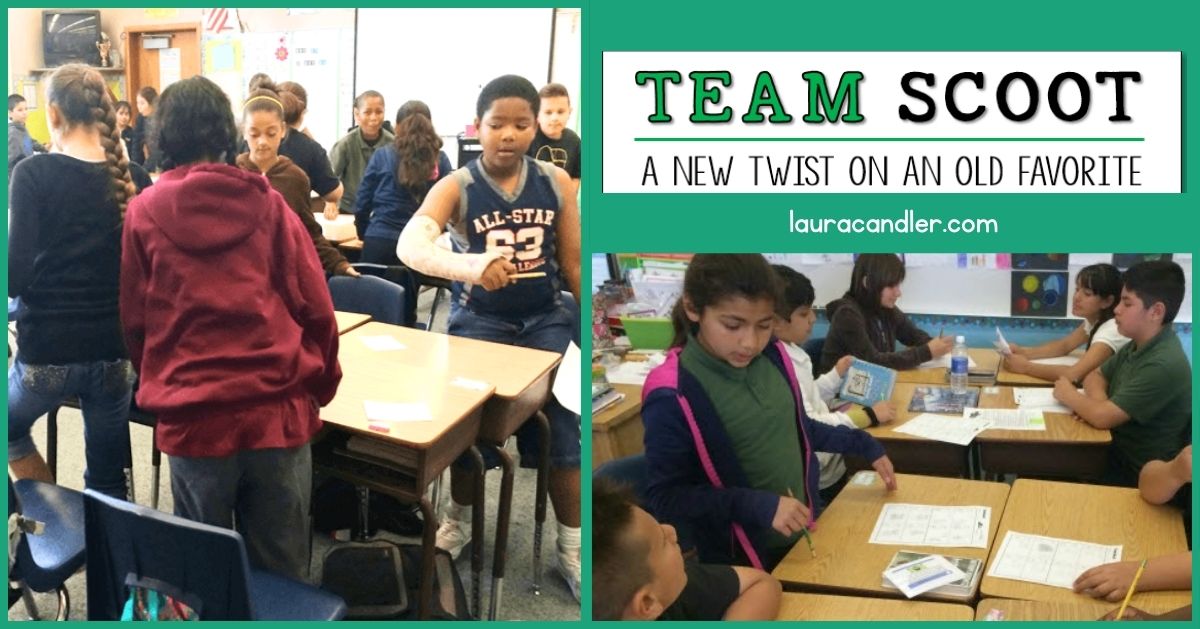Have you ever heard of Pay It Forward Day? Each year, on April 28th, we’re encouraged to perform random acts of kindness for friends, family members, and even total strangers. The Pay it Forward Day website explains that it’s a time to remind ourselves of the power of giving and how the process of paying it forward can make the world a little brighter. You’ll be glad to learn that those who give to others also benefit personally from paying it forward! According to Psychology Today, random acts of kindness make us feel happier and more in control, and they also help people overcome feelings of loneliness and isolation. Sounds like something the world needs right now!
Years ago when I learned about Pay It Forward day, I created a free printable graphic organizer that teachers could use for teaching a lesson about the importance of kindness. I also created a paperless Google Slides version for Google Classroom that’s also perfect for distance learning. I left out the official Pay It Forward date of April 28th to make it easy for you to conduct this lesson at any time. You might even want to designate an entire week as Pay It Forward Week!
Pay It Forward Lesson Suggestions
If you’d like to use this graphic organizer with your students, it’s important to begin the lesson with a class discussion about the meaning of “pay it forward.” Begin the discussion by asking your students if they know what it means to “pay someone back” which is a concept most students understand. For example, if a student forgets his or her lunch money and a friend offers to pay for lunch, the person who received the free lunch will want to pay their friend back later. Be sure to point out that paying someone back doesn’t have to involve money. Sometimes a friend will do something nice for you which makes you want to do something nice for them in return. The key concept is that paying someone back happens AFTER that person has done something nice for you.
Next, introduce the concept of “paying it forward” which means doing something nice for someone BEFORE they do something nice for you, without any expectation that they will return the favor. For example, students might call a grandparent or relative who lives at home just to cheer them up. They might read to a younger sibling, or do household chores without being asked. Ask your students to help you brainstorm safe ways to pay it forward.
After the discussion, give each student a copy of the Pay It Forward graphic organizer, or assign the digital version in Google Classroom. Ask them to do at least six good deeds and write a short description of each act of kindness on one of the clouds. You should probably give your students at least a week to complete this assignment which will mean doing about one good deed per day. Schedule a follow up class meeting to discuss the results of the activity, or create a question in Google Classroom that your students can answer to discuss their experiences.
If you don’t read this blog post until after April 28th, you might be tempted to put off teaching this lesson until next year. However, I’d like to encourage you to give it a try now because teaching kids about kindness is relevant any time of the year. Loneliness and isolation are real issues, and asking kids to focus on being kind to others will help them find safe ways to connect with others and make a difference. In some ways, taking time to teach this lesson now is YOUR way of paying it forward!







